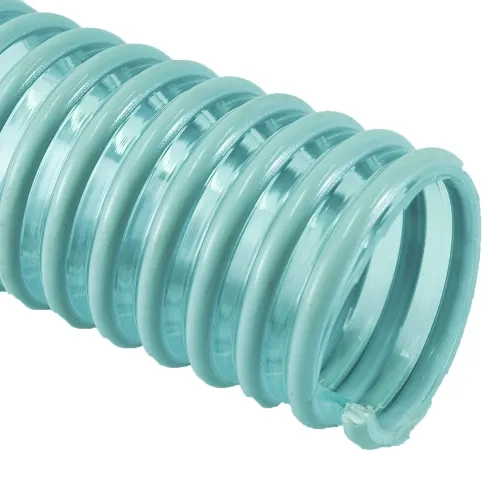hose braiding
Understanding Hose Braiding An Essential Aspect of Hose Manufacturing
Hoses are integral components in a multitude of industries, serving purposes as diverse as fluid transfer, hydraulic applications, and pneumatic systems. One of the key techniques in enhancing the performance and durability of hoses is the process of hose braiding. This article delves into the concept of hose braiding, its importance in manufacturing processes, and the various applications it serves.
Hose braiding involves the interlacing of materials—usually synthetic fibers or metal wires—around the hose's exterior. This braiding adds structural integrity and flexibility, allowing hoses to withstand higher pressures and environmental stresses. A hose that is well-braided is better equipped to handle the rigors of demanding applications, such as those found in industrial, automotive, or aerospace sectors.
The braiding process can utilize various materials depending on the intended use of the hose. For instance, high tensile strength polyester and nylon are common choices for general-purpose hoses, as they provide excellent flexibility and resistance to abrasion. In applications where temperature and chemical resistance are critical, manufacturers may opt for materials like stainless steel or Kevlar. This careful selection of braiding material is essential, as it directly impacts the hose's performance and lifespan.
There are different braiding techniques employed in hose manufacturing, each offering unique benefits. The most commonly used technique is 'over-braiding,' where fibers are woven around the hose in a crisscross pattern. This method not only reinforces the hose but can also enhance its appearance, providing a polished look suitable for consumer-facing products. Another technique is 'spiral braiding,' where the braiding strands are laid in a helical pattern. This approach typically provides greater flexibility and is particularly beneficial for hoses that need to bend at tight angles.
hose braiding

The benefits of hose braiding extend beyond just strength and flexibility
. A braiding layer also serves as protection against environmental factors such as UV rays, ozone, and abrasion, which can degrade hose materials over time. This protective barrier is vital in ensuring the longevity of hoses, especially in outdoor applications or where the hose is subjected to continuous movement and contact with abrasive surfaces.In addition to durability and protection, hose braiding can influence the hose’s weight and ease of handling. A well-designed braided hose can be significantly lighter than its non-braided counterparts while maintaining similar performance characteristics. This is particularly advantageous in applications such as aerospace and automotive industries, where weight is a critical factor.
Another key advantage of braided hoses is their ability to resist kinking and collapsing. Unlike traditional rubber hoses, which may bend and reduce flow, braided hoses maintain a consistent interior diameter regardless of the position they're in. This ensures a steady and reliable flow of fluids, which is crucial in many applications like fuel delivery and hydraulic systems.
As industries continue to evolve and demand more robust and efficient solutions, the role of hose braiding will only become more critical. Innovations in materials and manufacturing processes are expected to deliver even more resilient and versatile braided hoses, catering to specialized needs across various sectors.
In conclusion, hose braiding is a vital manufacturing technique that significantly enhances the performance, durability, and functionality of hoses. By utilizing advanced materials and braiding technologies, manufacturers can produce hoses that not only meet the challenges of modern applications but also offer improved aesthetic and handling features. As demand for these products continues to rise, the future of hose braiding looks promising, indicating ongoing advancements that will benefit numerous industries. Whether for industrial use or high-performance applications, the importance of hose braiding cannot be overstated, reinforcing its status as a cornerstone in the world of hose manufacturing.
-
Top Quality Oxy Acetylene Hoses for Sale Fit for Welding DemandsNewsJul.28,2025
-
The Future of Pneumatic Air Tubes in IndustryNewsJul.28,2025
-
Superior and Reliable LPG Hose Pipe Solutions for Every NeedNewsJul.28,2025
-
Exceptionally Durable and Versatile Premium Braided PVC TubingNewsJul.28,2025
-
Best Adapters for Connecting Garden Hose to PVC Pipe ConnectionsNewsJul.28,2025
-
The Essential Role of LPG Hoses in Safe and Efficient Gas DistributionNewsJul.16,2025














